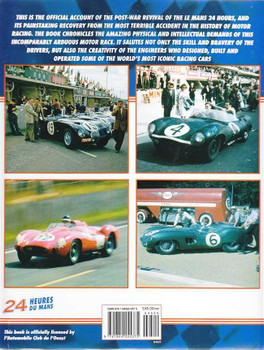Description
Author: Paul Zazarine, Foreword by Jim Wangers, Softbound, 158 Pages, ISBN: 9781583881637, 1st Edition, 2006
...from the Foreword:
.. "From New York City all the way to LA, they're tormi Dance, Dance, Dance...Do The Wide-Track. Dance, Dance, Dance, Do The Wide-Track...Yee-
aahr
Beheye it or not, those were the words to a hit song and a matching dance that was playing regularly on Top-Forty Radio back in the mid 1960s. Recorded by agroup named "The Fabulous Pack," the program also featured a special dance, dramatically demonstrating the value of maintaining good balance by planting your feet further apart as your dancing partner tries to posh you over. All good fun, while clearly proving that planting your feet further apart, taking a wider stance, saw you better balance. It was just like a hot new car everybody was talking about, named The Wide-Track lkinriac, and it was all part of a promotion, to gain mention from this car-crazy country!
Semon E. (Bunkie) Knudsen took the reigns at Pontiac in late 1956, but it wasn't until the 1959 model was introduced that his guidance and leadership became much more evident. The first thing was go racing. As early as 1957, Pontiac was making a
new name for itself in organized stock car with its moderately massaged 347 CID engine. In 1958, the same powerplant, now boasting 370 CID, proved to be even more effective.
But it wasn't until the 1959 model that Bunkie's all new car revealed head-turning new styling, a new 389 CIDengine and perhaps the most significant new feature of all.. .Wide-Track wheels. This was attained by moving the wheels out 21/2 inches on each side of the car, thus widening the tread a total of five inches, and clearly establishing this new Pontiac as the car with the widest tread offered by any car sold in America.
This feature was very visible. Just by looking at the car on the road you could see that the wheels were indeed further apart and that it obviously was better balanced and took a better grip on the road.
Add this very visible feature to the already growing image of performance, backed by consistent wins on the nation's racetracks, and there it was - Pontiac was winning all those races because the car was better balanced. It took a better grip on the road, had less tendency to lean in curves, was smoother, safer, and much more comfortable. What an incredibly successful way to make racing victories pay off as a believable consumer advantage.
The Wide-Track Pontiac Era was born and from this auspicious beginning came one great car after another: Bonneville, Grand Prix, LeMans, GTO, Firebird, Trans Am, and Grand Am, each carving a deep niche in America's tough new car market, and all contributing to one of the most spectacular sales explosions in the history of any American car manufacturer.
Paul Zazarine takes you through these magnificent years, now known as the Wide-Track Pontiac Era, as only he can, with his intuitive knack for finding the "story behind the story".





















